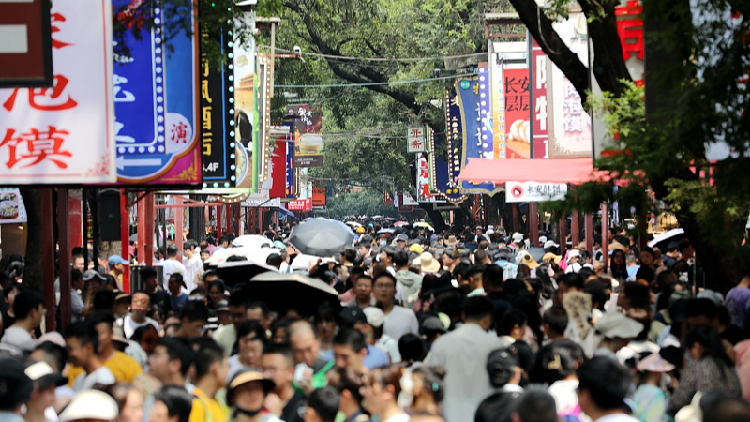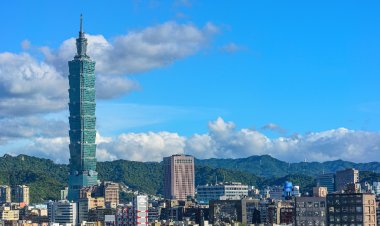Summer tourism surges in China, boosting economic vigor
Summer travel in China is experiencing a significant increase, contributing to heightened economic vitality.

During this period, China anticipates 860 million railway passenger journeys, averaging 13.87 million each day. The robust travel demand is primarily fueled by summer vacationers, tourists, and family visitors, according to the China State Railway Group Co., Ltd.
To accommodate this influx, railway operators are set to enhance transportation capacity by adding 276 temporary trains daily—an increase of 128 compared to last year. In total, around 11,500 trains will operate daily across the country.
Data from the flight travel application Umetrip reveals that domestic flight bookings from July 1 to August 31 have exceeded 18 million, a 23-percent rise from the same timeframe in 2023. Furthermore, there are plans for about 145,000 inbound and outbound flights, with nearly 7 million tickets already sold—almost twice the number from the previous year.
Several airlines have announced that their daily domestic flight schedules will surpass pre-pandemic levels of 2019, with international flights anticipated to reach similar numbers. Additional flights are being arranged for popular tourist spots, including locations in China's Xinjiang Uygur Autonomous Region, Sichuan Province, and Hainan Province.
Demonstrating readiness for the travel surge, Quan Xiaoyi, vice president of Sanya Phoenix International Airport, shared that preparations include deploying volunteers at check-in counters and special service areas, and opening green channels for new university students to enhance travel efficiency and ensure a seamless experience.
**Summer Vacation Economy**
Driving the surge in travel is a thriving "summer vacation economy," influenced by tourism demands for educational and family outings.
Ctrip reports that nearly 40 percent of its summer travelers selected attractions suited for children, with renowned theme parks in cities like Beijing, Shanghai, Guangzhou, and Zhuhai emerging as top family-friendly destinations.
"The popularity of family trips and educational tours underscores the increasing demand for enriching family interactions and educational experiences," remarked Xiao Peng, a researcher at online travel agency Qunar.com. "Such trips also foster the transformation of the tourism industry toward diversification and personalized experiences."
To support evolving consumer preferences, Chinese authorities have rolled out several initiatives aimed at assisting tourism businesses.
Fu Hanxiao, an official from the Ministry of Culture and Tourism, stated that this summer will see nearly 37,000 cultural tourism consumption events launched nationwide. These events will encompass over 4,000 consumption categories and feature appealing incentives such as coupons, discounts, and budget-friendly package deals.
The holidays from the Spring Festival to May Day and the Dragon Boat Festival have showcased a swift recovery in cultural and tourism consumption, highlighting the immense potential of China's expansive market of over 1.4 billion people.
Analysts predict that sectors like tourism, education, and entertainment will prosper in the coming years, driven by the rising demand for quality and customized experiences during the summer season, serving as a new engine for economic momentum.
**Boom in Inbound and Outbound Tourism**
The enthusiasm for summer travel has also resulted in an increase in outbound and inbound travel bookings. Ctrip's report indicates a steady rise in China's tourism market, with nearly seven million air tickets expected to be booked for inbound and outbound trips this summer—an impressive 93-percent increase compared to last year.
In July, Guangzhou, a major southern Chinese city, registered over 44,000 arrivals and departures in just one day, as reported by local customs.
In the first half of this year, China received 14.64 million international visitors, marking a 153-percent increase from the previous year. Notably, 8.54 million entered China via visa-free entry, an increase of 190 percent, according to the National Immigration Administration.
This surge is partially attributed to China's 144-hour visa-free transit policy, which has welcomed many first-time visitors.
"Tourism has become a burgeoning demand among people seeking a better quality of life. Tourism demand is the most important factor in promoting the development of the holiday tourism economy," stated Dai Bin, president of the China Tourism Academy, in remarks to China Media Group.
"In promoting the development of the tourism economy, authorities in various regions have pushed forward innovation in tourism supply chains, especially in improving public cultural services in tourism. Creating a friendly tourism marketing environment plays a fundamental supporting role in the innovative development of China's tourism economy," Dai added.
(With input from Xinhua)
Sophie Wagner contributed to this report for TROIB News
Find more stories on Business, Economy and Finance in TROIB business












